Salesforce CPQ: Effective Discounting Strategies


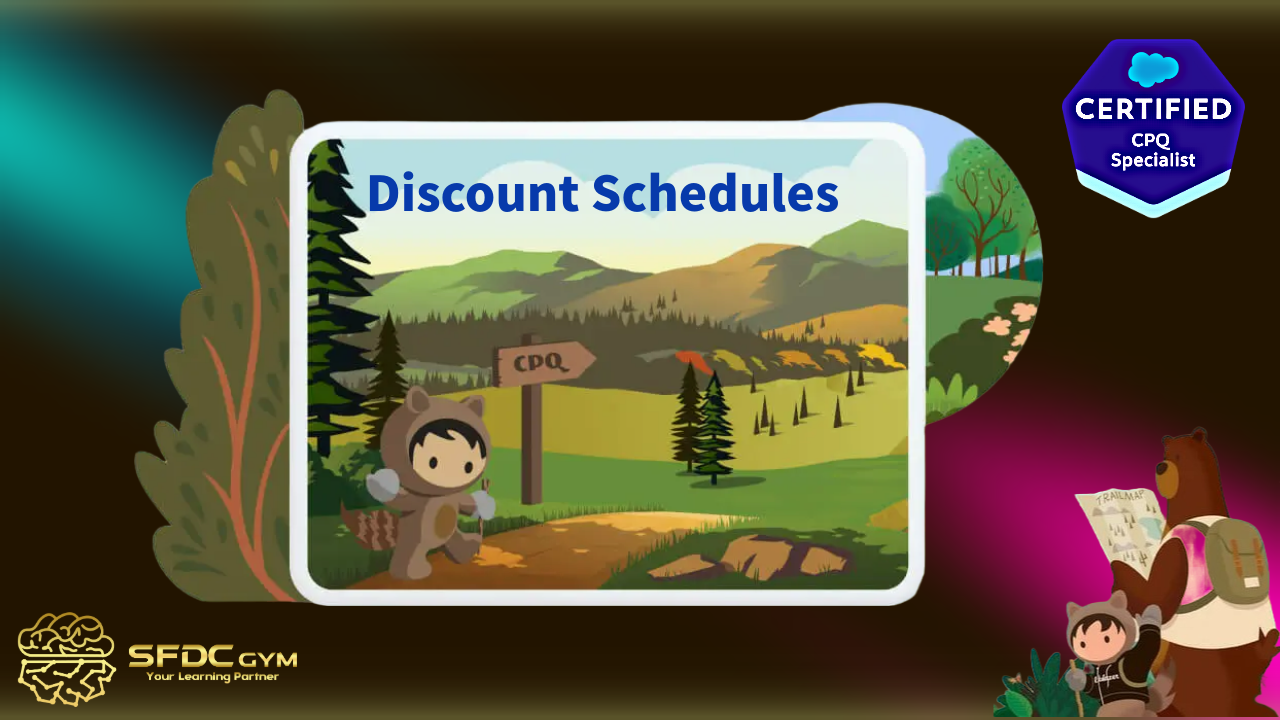
Mastering Discounting Strategies in Salesforce CPQ
Discover how effective discounting strategies in Salesforce CPQ can transform your sales process and drive success. This guide will help you understand the nuances of discount schedules, explore their types, and offer step-by-step configuration guidance. Whether you're a sales manager, CPQ administrator, or Salesforce developer, this comprehensive overview is designed for you.
Understanding Discount Schedules in Salesforce CPQ
Discount schedules in Salesforce CPQ are a powerful tool for implementing strategic pricing across various products and services. They allow businesses to adjust prices based on specific criteria, ensuring competitive offers while maintaining profitability. With Salesforce CPQ's flexibility, you can easily manage discounting rules that adapt to customer needs and market conditions.
By utilizing discount schedules, businesses can streamline their pricing strategy, making it dynamic and responsive to demand. These schedules serve as a guiding framework, ensuring that discounts are applied consistently and transparently. This capability not only boosts sales efficiency but also enhances customer satisfaction by providing clear and attractive pricing.
Exploring Types of Discounting in Salesforce CPQ
- Volume-Based Discounts: Volume-based discounts incentivize customers to purchase in larger quantities by offering price reductions as the volume increases. It's a common strategy to encourage bulk purchases and optimize inventory turnover.
Example: A company selling office supplies might create a discount schedule for printer paper. For purchases between 1-50 pages, a 5% discount is applied; 50-100 pages receive a 10% discount, and 100-400 pages enjoy a 25% discount. This tiered structure motivates customers to buy more while managing costs efficiently. - Term-Based Discounts: Term-based discounts reward customers for committing to longer subscription periods. This approach is particularly beneficial for subscription-based services, where extended commitments ensure steady revenue streams.
Example: A software company offers discounts based on subscription length. A 6-month commitment grants a 10% discount, a 12-month period offers 20%, and a 24-month subscription provides a generous 30% discount. Such incentives foster customer loyalty and secure predictable income. - Cost-Based Discounts: Cost-based discounts are calculated based on the cost of goods sold, allowing companies to maintain desired profit margins while offering competitive prices. It's a dynamic approach that considers production costs in discount calculations.
Example: A manufacturing firm can use cost-based discounts to reflect the cost of materials and labor for each product. Products with higher costs may carry more attractive discounts, ensuring profitability while appealing to cost-conscious customers.
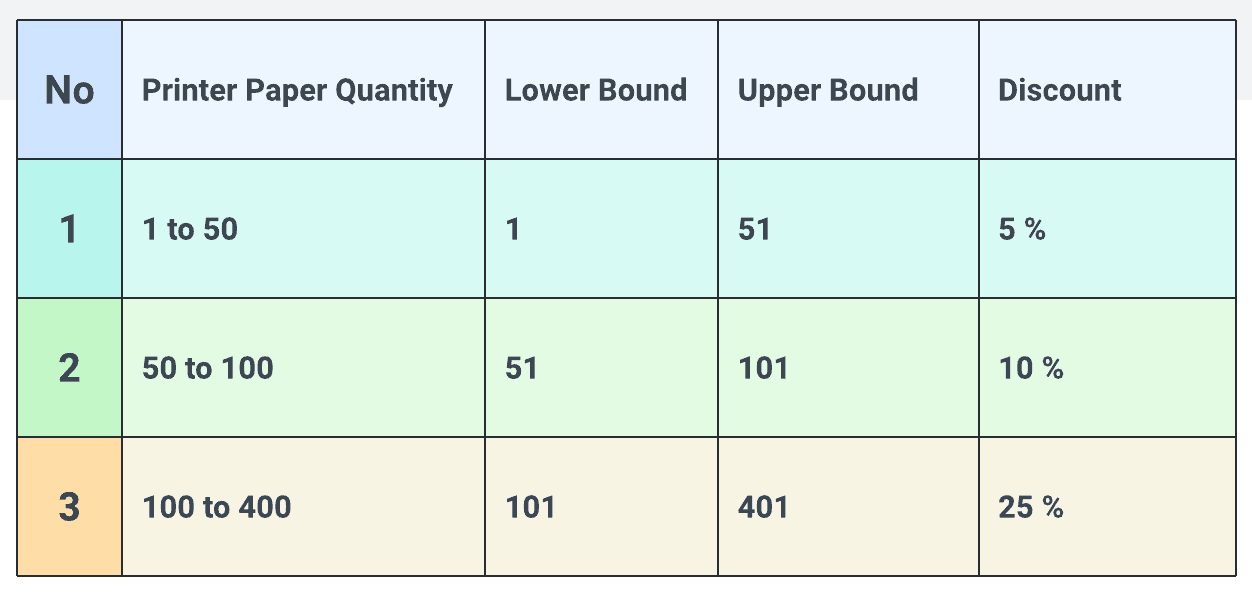
Nature of Discounting in Salesforce CPQ
- Range Discounts: Range discounts apply a single discount percentage to a category or range of product quantities. This straightforward approach is easy to manage and communicate to customers.
In our printer paper example, a 5% discount might apply uniformly to all purchases within the 1-50 page range. This simplicity makes range discounts a popular choice for businesses seeking straightforward pricing strategies.
Let's consider a scenario where a client orders 95 sheets of printer paper. This quantity falls within the 50 to 100 range, which corresponds to the second pricing tier. Consequently, the client receives a 10% discount applicable to all 95 sheets, demonstrating how range discounts effectively reward bulk purchases. - Slab Discounts:Slab discounts apply different discount percentages to each segment of the purchase volume. This tiered approach allows businesses to offer escalating discounts as customers purchase larger quantities.
Continuing the printer paper scenario, a customer purchasing 95 pages would receive a 5% discount on the first 50 pages and a 10% discount on the remaining 45 pages. This layered strategy encourages incremental purchasing while maintaining control over discount levels.
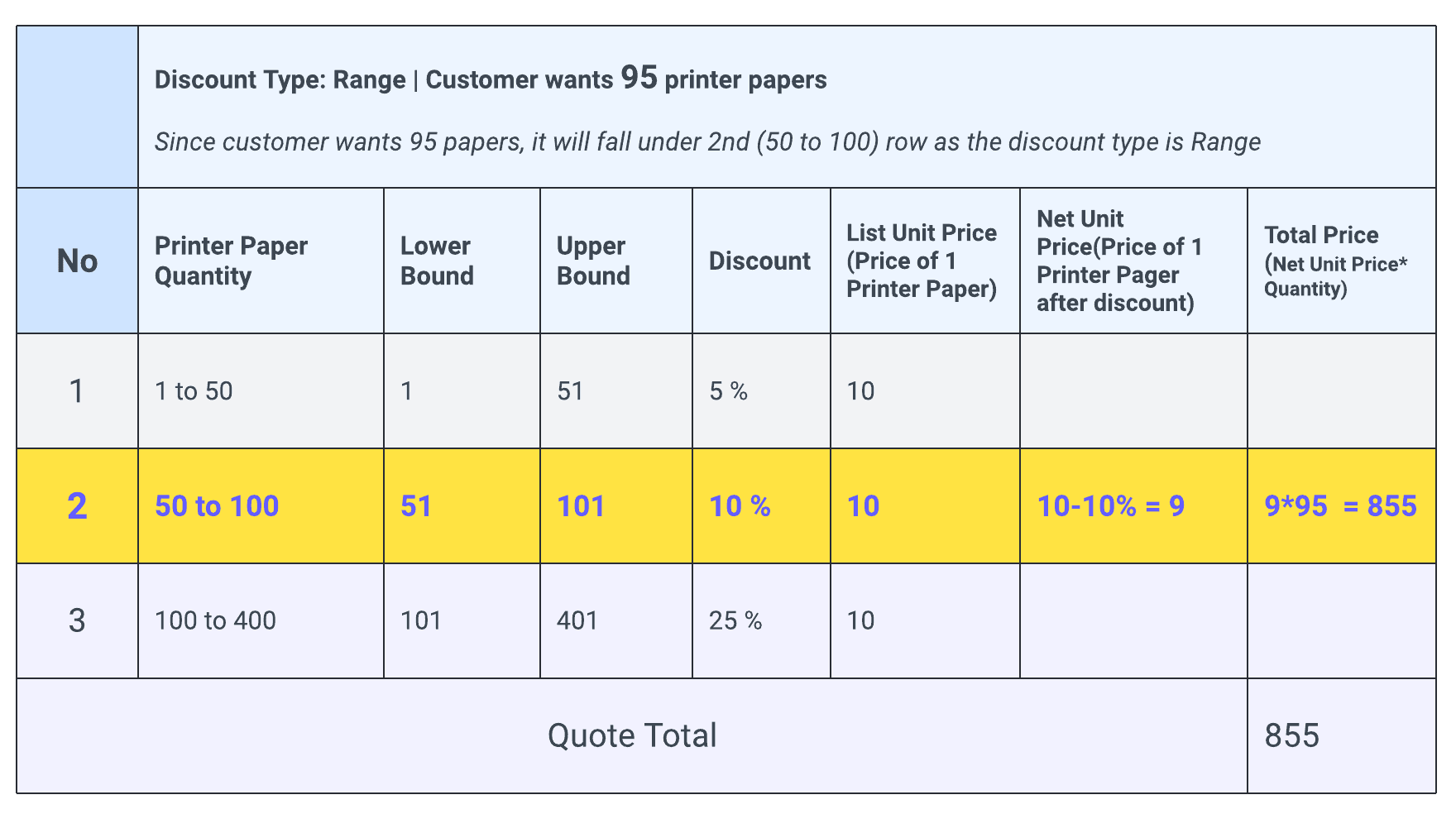
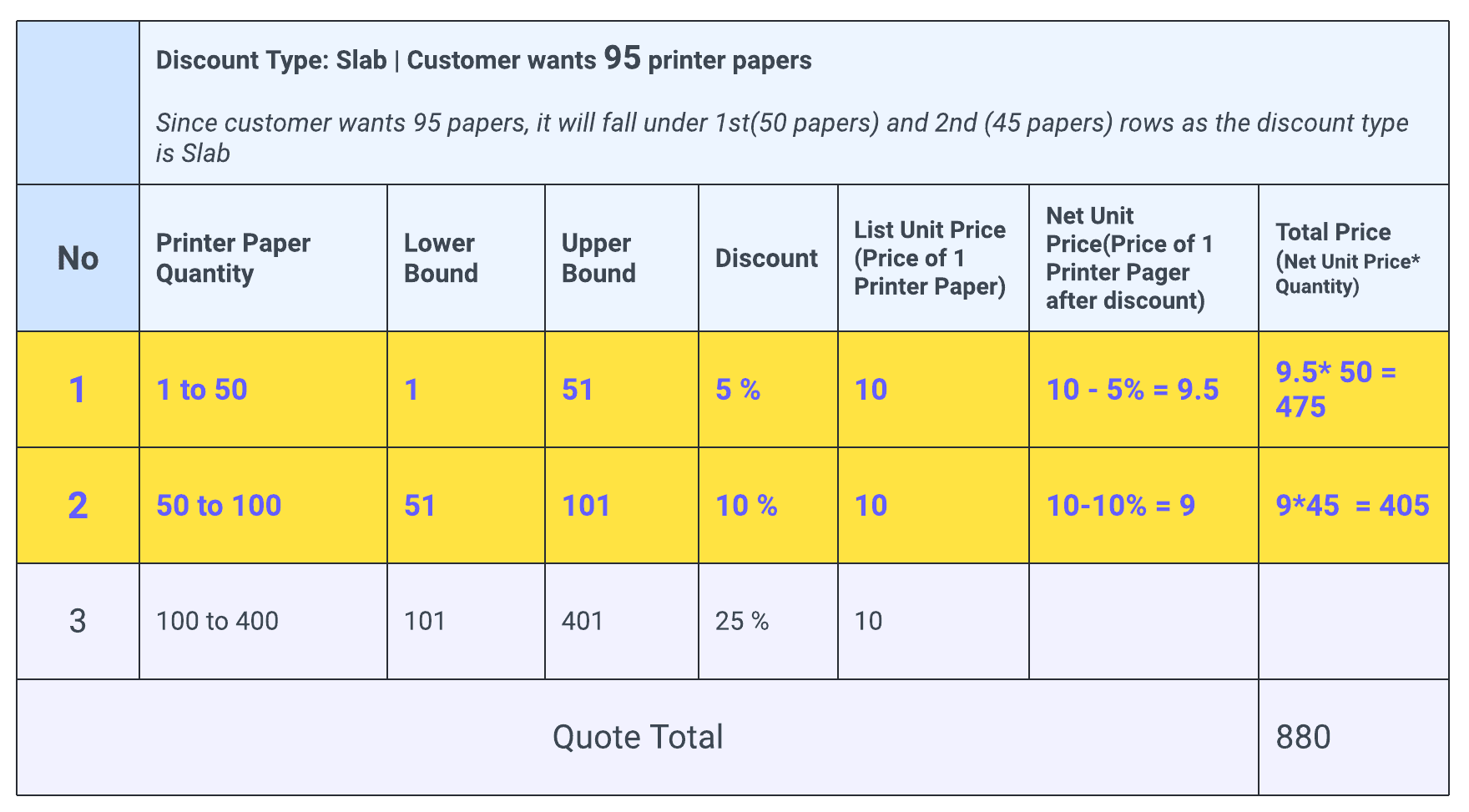
Important Fields in Discount Schedules
Schedule Name
The schedule name is a crucial identifier for each discount schedule. It helps categorize and distinguish between multiple pricing strategies within Salesforce CPQ.
Type
The type field defines the discount strategy employed, such as volume-based, term-based, or cost-based. Accurately selecting this attribute ensures that the correct discount logic is applied.
Discount Unit
Discount units specify how discounts are calculated, whether as percentages, fixed amounts, or based on price adjustments. This flexibility allows businesses to tailor discounts to their unique sales models.
Aggregation Scope
Aggregation scope determines how discount calculations are aggregated across products, orders, or customer accounts. This setting influences the overall discount application and ensures accuracy in pricing calculations.
Cross Products
Cross-products settings enable discounts to apply across different product categories, enhancing the flexibility of pricing strategies and accommodating diverse customer needs.
Cross Orders
Cross-order discounts consider customer purchases over multiple orders, promoting long-term customer relationships and encouraging repeat business.
Include Bundled Quantities
This field ensures that bundled product quantities are included in discount calculations, maintaining consistency and accuracy in pricing.
Override Behavior
Override behavior settings dictate whether discounts apply to all qualifying tiers or only to the current tier. This choice affects how discounts are communicated and calculated.
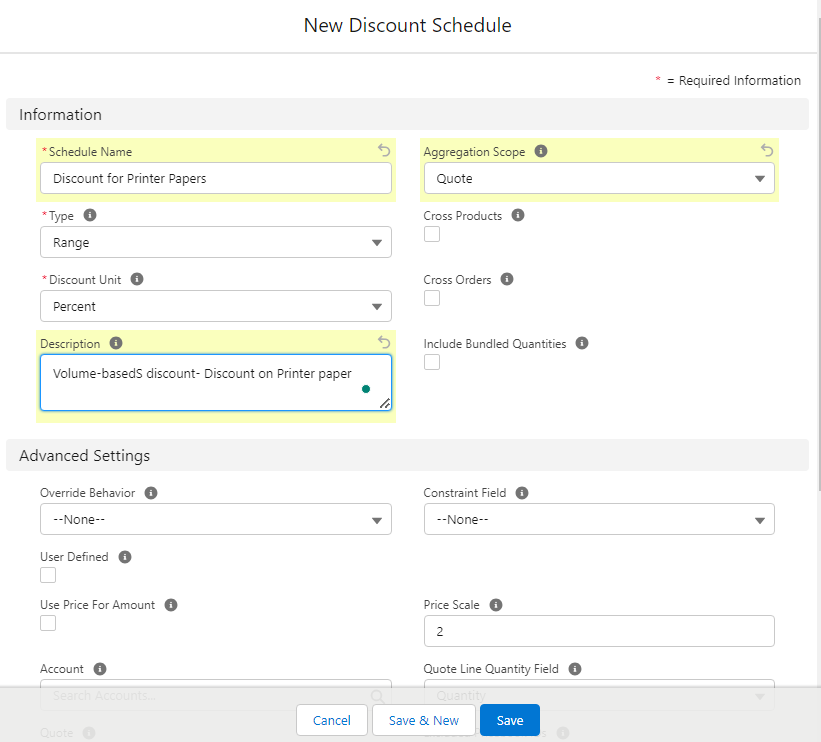
Configuring Volume-Based Range Discounts in CPQ
- Navigate to Discount Schedules: Begin by accessing the app launcher and searching for "Discount Schedules". Once located, click on the "New" button to create a new discount schedule.
- Input Initial Values: In the setup form, enter the following details:
Schedule Name: Discount for Printer Papers
Type: Range
Discount Unit: Percentage
Description: Volume-based discount - Discount on Printer paper
After entering the values, make sure to save the record to store your configurations.
- Edit Discount Tiers: Click on the "Edit Tier" button to create the table that defines each discount tier as per your requirements.
- Link Discount to Product: Navigate to the "Product" tab and search for or create a product under the name "Printer Papers". Within the Salesforce CPQ Discounting section, locate the Discount Schedule field and select "Discount for Printer Paper" from the dropdown.
- Finalize and Save Settings:Ensure all the details are correctly entered and save the changes to apply the discount schedule to the specified product. This setup will ensure that your pricing strategy is accurately implemented within the CPQ system.
Configuring Volume-Based Slab Discounts in CPQ
- Establish Slab Tiers: Define discount slabs that accommodate escalating discount percentages as purchase volumes increase.
- Calculate Tier Discounts: Determine discount percentages for each slab tier, ensuring transparency and consistency.
- Configure Schedule Parameters: Set up schedule attributes to match the slab discount strategy, ensuring accurate and effective pricing.
Conclusion
Discounting in Salesforce CPQ offers a wealth of opportunities for businesses to optimize pricing strategies, enhance customer satisfaction, and drive revenue growth. By understanding the nuances of discount schedules, sales managers, CPQ administrators, and Salesforce developers can unlock the full potential of these features.
Whether employing volume-based, term-based, or cost-based discounts, the ability to tailor pricing strategies to meet customer needs and market demands is invaluable. By following step-by-step configuration guidelines, businesses can implement effective discounting strategies that align with their unique goals.
To explore further and enhance your Salesforce CPQ capabilities, consider engaging with community forums, attending workshops, and accessing additional resources. Empower your organization with the tools it needs to succeed in the dynamic world of pricing and discounting strategies.


